How to learn your 3 times tables
Learning your 3 times table doesn’t have to be difficult. Check out these tips, strategies, and practice problems to make learning 3s a breeze!

Author
Katie Wickliff
Published:
April 2025
Key takeaways
- • Students should learn their 3 times table after building a foundation with other multiplication facts.
- • Using charts or other colorful visual aids can help children get familiar with patterns.
- • Parents can help their child learn the 3 times table through songs, games, and math practice programs.
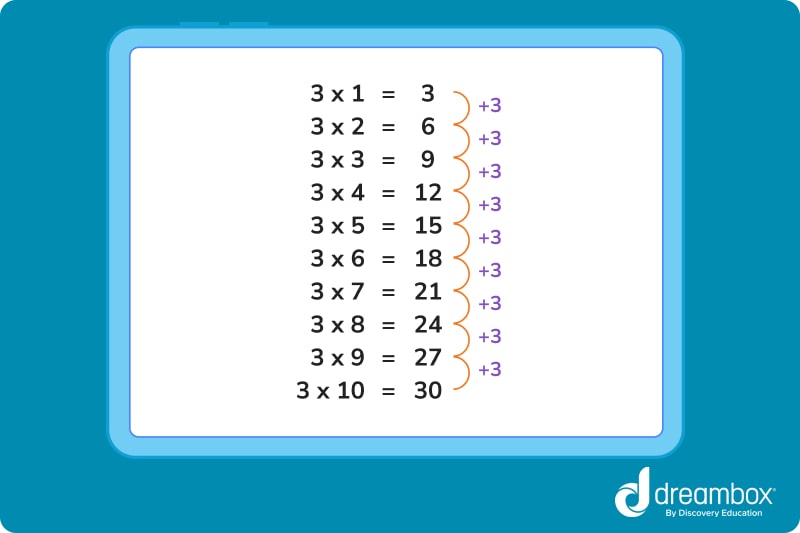
How to learn your 3 times table
Beginning in second grade, students focus on learning and quickly recalling multiplication facts. Some are generally easier to remember, such as the 2 times table and the 10 times table, so teachers often introduce those first. Eventually, students progress to more challenging multiplication facts, such as the 3 times table.
It’s important to note that opinions differ on the best order to introduce the 3 times table. Some educators have found that transitioning from 2s to 5s and 10s reinforces the repeating pattern, while others think introducing the 3 times table next is a more natural and gradual progression from the 2 times table.
While learning the 3 times table is slightly less intuitive than others, students can build on the strong foundation they created from repeated addition and the times tables they’ve already learned. Regardless of whether your child is confident in their skills or nervous about learning their multiplication facts 3 times table, we’ve got tips, strategies, and practice problems to help. Let’s get started!
3 times table chart
When your child is first learning their 3 times table, a multiplication chart is a great visual aid. When I was teaching 3rd grade, I found the following two charts helpful:
Table of contents
Strengthen your math skills with DreamBox
Turn math into playtime with DreamBox Math
DREAMBOX MATH
Get started for FREE today!
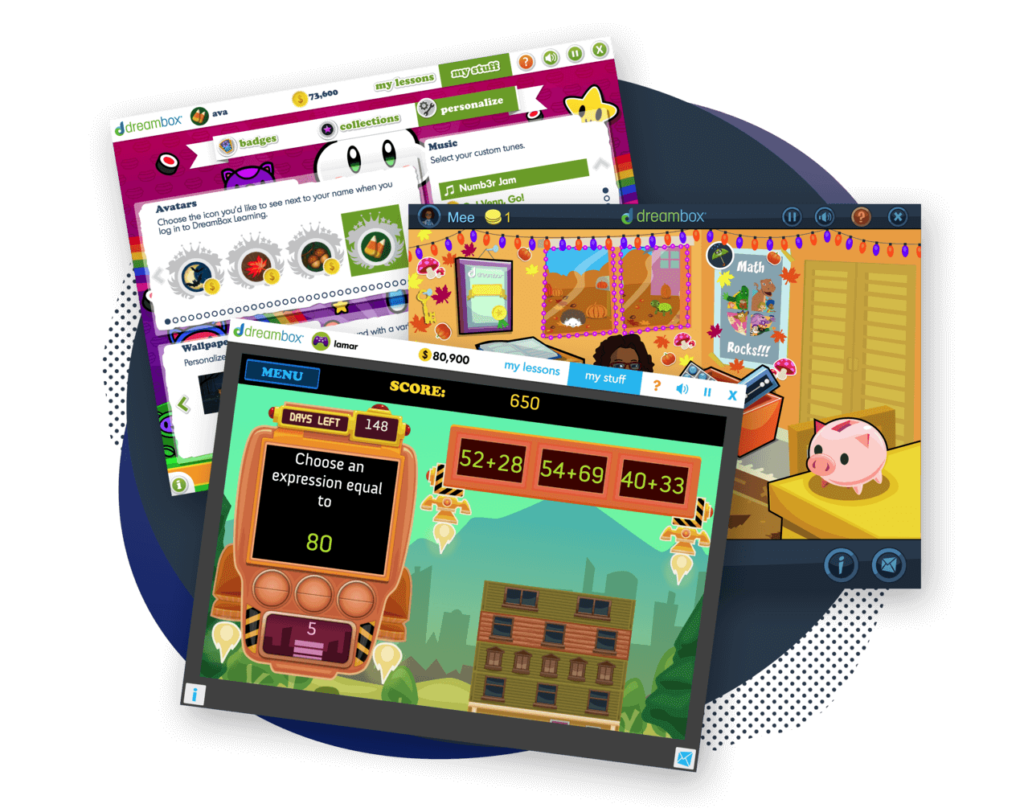
Tips on learning your 3 times tables
Many parents may remember learning their times tables through rote memorization—repeating the information over and over—but educators have found that students today benefit from having a variety of strategies at their fingertips. For example, some students might memorize their 3 times tables quickly using traditional flashcards, while others might benefit from a game-based approach. Here are some great tips to help your child learn to multiply by 3.
- Double the Number and Add One More Group: children learn to double before learning multiplication, and learning the 2 times table reinforces this concept. Encourage your child to double the number they’re multiplying by 3, then add one more group. Let’s use 3×5 as an example:
To solve 3×5, we first double the 5.
5+5 (or 5×2) = 10
Then, we add another group of 5 to that answer.
10+5=15
So, 3×15=15!
- Make it Less Overwhelming: this tip can apply to all of the times tables, but is particularly effective for children who feel overwhelmed by the number of facts they must learn. Use drawings to show groups, helping your child see that 3×4 is the same is 4×3! When they progress to other times tables, they’ll at least know one fact, which will help them build confidence.
- Skip Count to Memorable Songs or Chants: using well-known songs can help commit the 3 times tables to memory. For example, a former colleague of mine uses the song “Happy Birthday” to reinforce the 3s:
(Sung to the tune of Happy Birthday)
“🎶3, 6, 9, 12, 15
18, 21, 24
27 and 30
That’s the 3 times table!”
- Learn by Playing Games: from scavenger hunts to painting by number, and from card games to dance parties, playing hands-on games is an effective way to help your child learn multiplication. My own children use online math programs, such as Dreambox, to make math practice fun. (They also love getting extra screen time!)
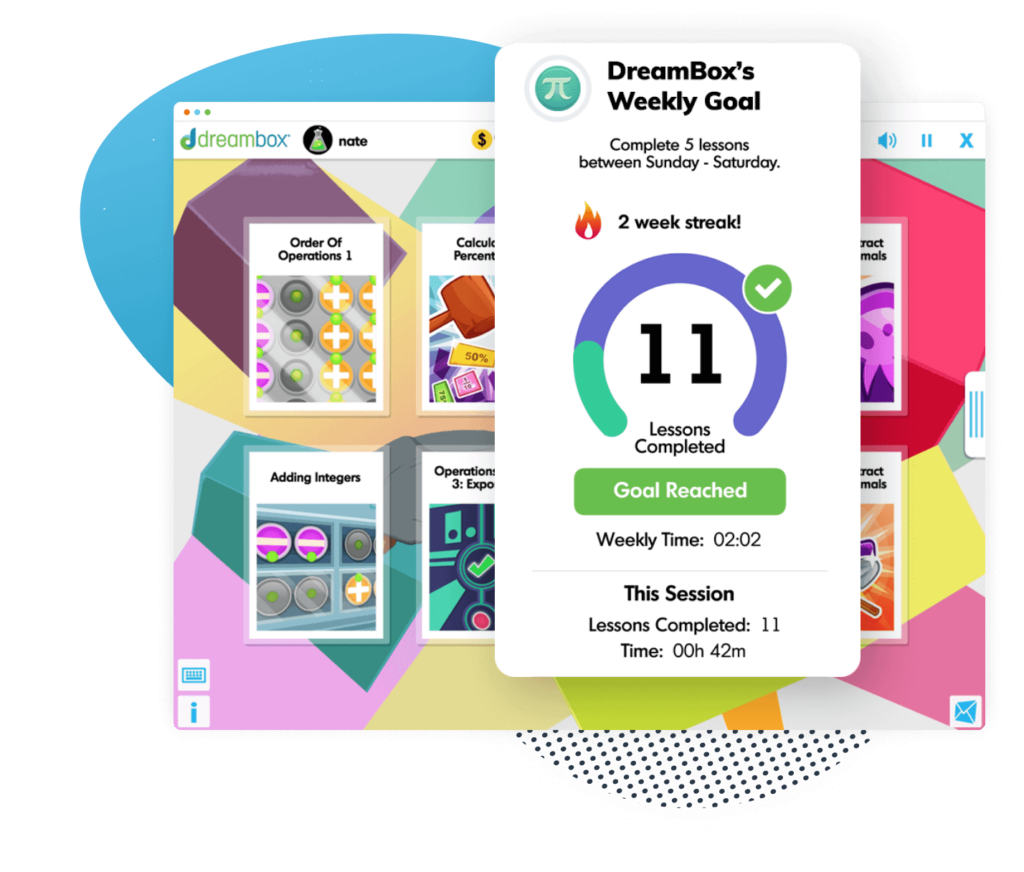
The math program that drives results
Get started today!
DreamBox adapts to your child’s level and learning needs, ensuring they are appropriately challenged and get confidence-building wins.
Practice problems
Whether through flashcards, games, or songs, students learn best when they have access to a variety of options to help them build math skills. Along with the ideas above, here are some fantastic 3 times table practice problems for your student to try.
Question 1: What does the picture show?
A. 2×3=6
B. 3×6=18
C. 3×3=9
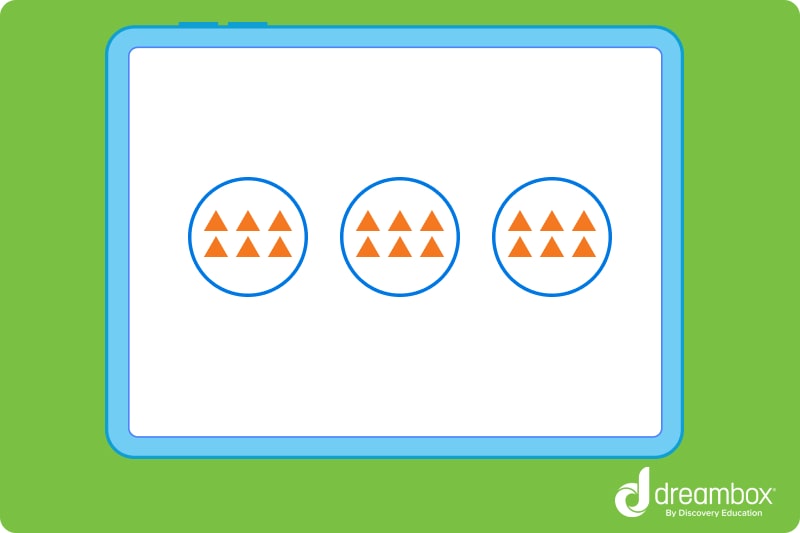
Answer: B
Question 2: What does the picture show?
A. 3×5=15
B. 5×3=10
C. 3×1=3
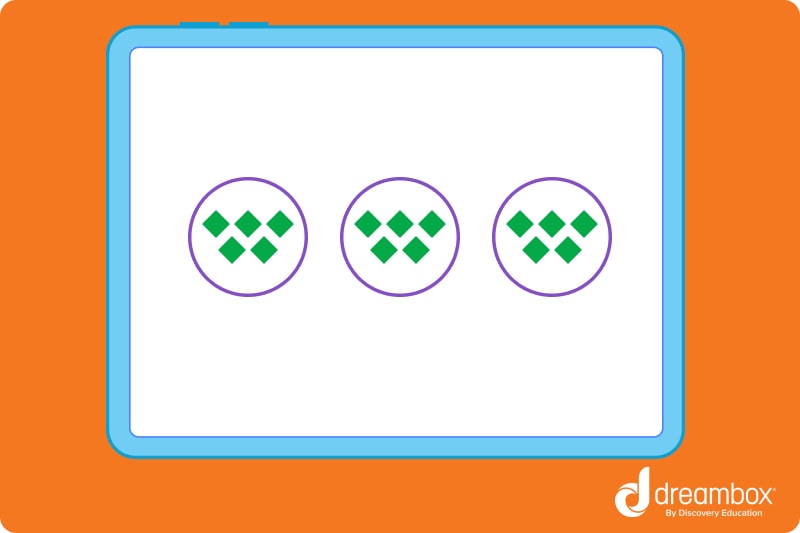
Answer: A
Question 3: Fill in the blank. Use the charts above to help find the correct answer!
3×9=_____
A. 19
B. 12
C. 18
Answer: C
Question 4: Fill in the blank. Use the charts above to help find the correct answer!
____ x 2= 6
A. 3
B. 2
C. 4
Answer: A
Question 5: Fill in the blank. Use the charts above to help find the correct answer!
3 x ____=24
A. 7
B. 8
C. 10
Answer: B
Question 6: Which repeated addition problem shows 3×3=9?
A. 3+3+3
B. 3+2
C. 3+9
Answer: A
Question 7: Which repeated addition problem shows 3×4=12?
A. 3+3+3+3+3
B. 3
C. 3+3+3+3
Answer: C
Question 8: True or False: 3×10 has the same answer as 10×3
A. True
B. False
Answer: A
Question 9: True or False: 3×2 has the same answer as 3+2
A. True
B. False
Answer: B
Question 10: True or False: 3+3+3+3+3+3+3 has the same answer as 3×7
A. True
B. False
Answer: A
Question 11: Fill in the blanks.
______ rows of _______
_______ x_______=________
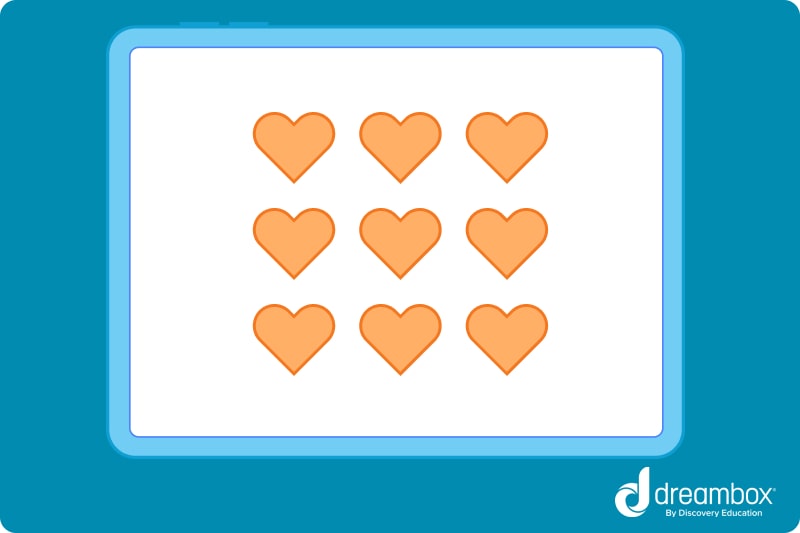
Answer: 3 rows of 3, or 3×3=9
Question 12: Fill in the blanks.
______ rows of _______
_______ x_______=________
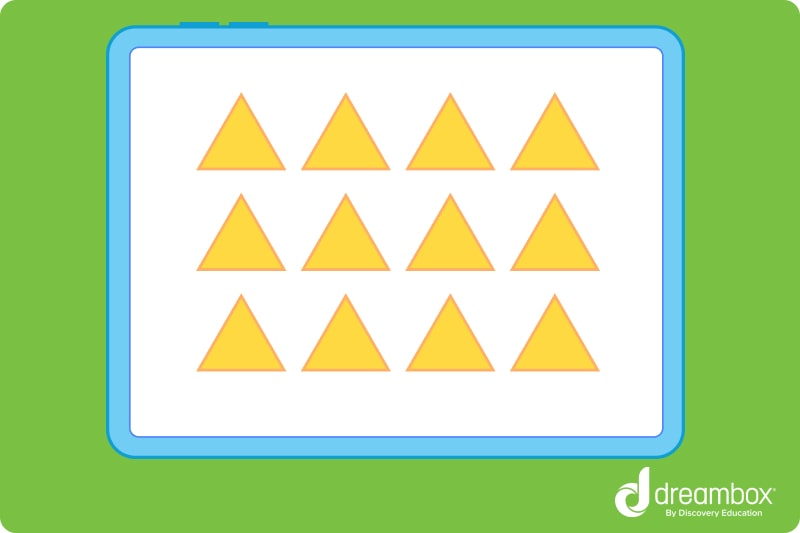
Answer: 3 rows of 4, or 3×4=12
Question 13: Fill in the blanks.
______ rows of _______
_______ x_______=________
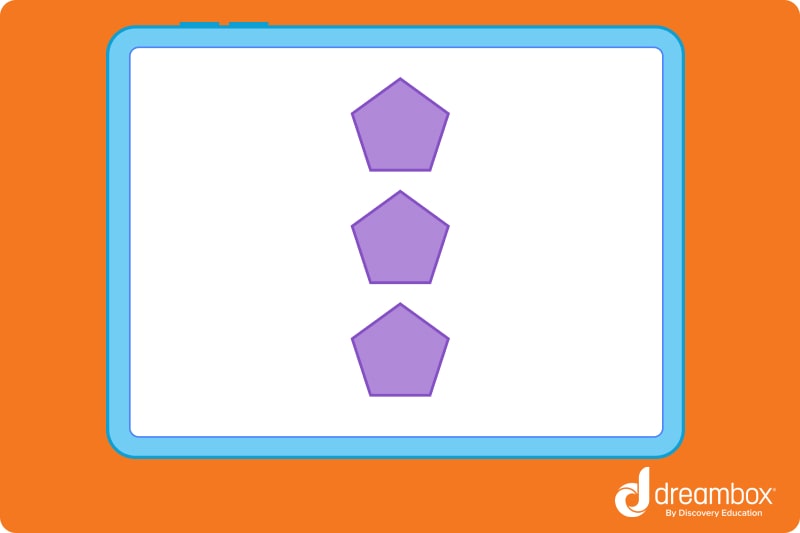
Answer: 3 rows of 1, or 3×1=3
Question 14: Jane is decorating for her birthday party and places 3 bouquets of flowers on each table. If she has 9 tables, how many bouquets does she need?
A. 12
B. 21
C. 27
Answer: C
Question 15: At the bakery, there are 3 cupcakes in each box. If the baker has 10 boxes, how many cupcakes does he have?
A. 30
B. 13
C. 23
Answer: A
Question 16: Hugo has 3 dogs. If each of his dogs has 4 legs, how many legs are there in total?
A. 7
B. 4
C. 12
Answer: C
Question 17: A box of Valentine’s chocolates can hold 8 pieces. If Shannon has 3 boxes, how many pieces of chocolate does she have?
A. 22
B. 24
C. 18
Answer: B
Extra challenge
Question 18: Josie buys 3 bags of friendship bracelets. Each bag holds 6 bracelets. If she gives away 3 bracelets, how many does she have left?
A. 12
B. 18
C. 15
Answer: C
Question 19: At Tuesday’s practice, a baseball team has 3 baseballs for each player. If there are 10 players on the team, but 1 is absent, how many baseballs does the team need for Tuesday’s practice?
A. 13
B. 30
C. 29
Answer: C
Question 20: Jace buys 4 packs of markers. Each pack has 3 markers. If Jace gives 1 pack to a friend, how many markers does Jace have left?
A. 12
B. 9
C. 6
Answer: B
Learning the times tables of 3
Learning multiplication facts doesn’t have to be overwhelming for your child. By using a variety of tips, strategies, and practice problems to reinforce what they’re learning in the classroom, your child will feel more confident in their multiplication skills, even when learning more difficult facts, like their 3 times table up to 100! Also, remember to check out Dreambox for interactive math practice that strengthens skills and builds confidence.
Take at home math practice to the next level
Empowering parents and educators to make math practice more impactful. Plus, your kids will love it.


About the Author
Katie Wickliff
Katie holds a master’s degree in Education, has over 15 years of education experience as a primary classroom teacher, and is Orton-Gillingham certified tutor. Most importantly, Katie is the mother of two primary school students, ages 8 and 11. She is passionate about maths education and firmly believes that the right tools and support will help every student reach their full potential.